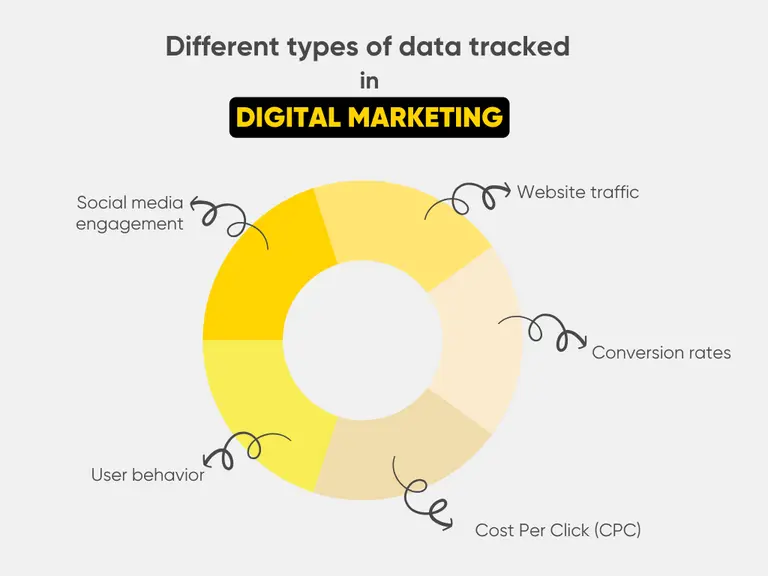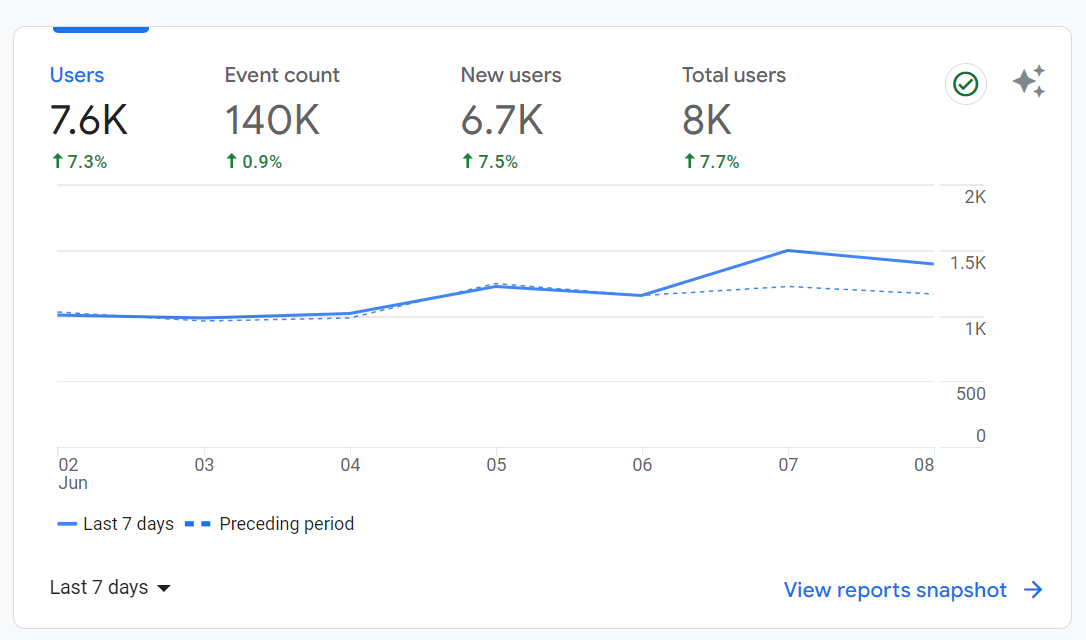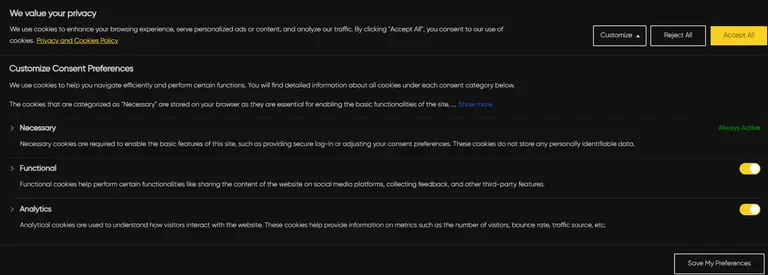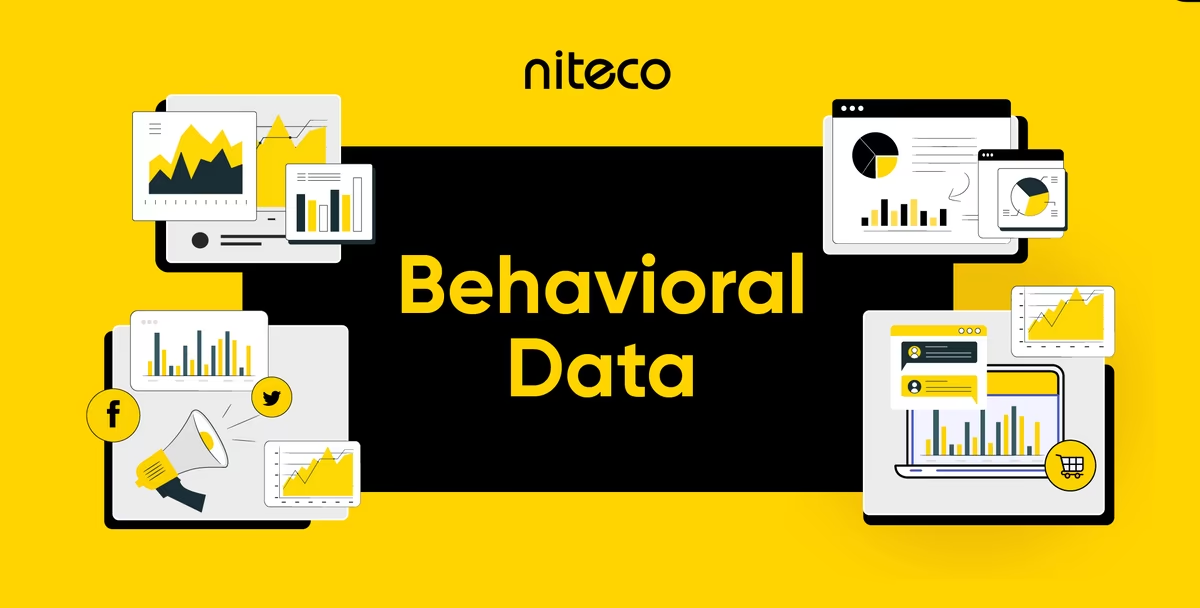As a marketing professional, you understand that the core of your organization's digital marketing strategy lies in cultivating genuine relationships with your audience. By investing time in understanding your consumer base and catering to their preferences, you can generate higher customer loyalty. However, if you're just starting with your digital marketing journey, how can you better understand your customers? The key lies in data and data tracking. In this article, we will explore what data tracking is and describe the various types of tracking you can implement, and present best practices for effective data tracking, drawing from years of experience in providing digital solutions at Niteco.
What is data tracking and why do we need it?
Data tracking and its importance
Data tracking is all about figuring out which numbers and events matter most within your user journeys, then gathering and studying data related to those things. When businesses dig into this data, they can spot trends and patterns that tell them where improvements can be made, helping them boost their performance and improve how customers feel about their business.
But here's the kicker: It’s not a one-and-done thing. For a company to make smart choices based on data, they need to consistently keep a close eye on the right info. This means tracking the most important numbers reliably and safely to get a good read on what customers want and how they behave. This data holds the key to understanding customer preferences, which in turn helps in making smart calls about marketing and sales strategies.
The essence of data tracking is to organize and study data to uncover useful insights. It's like having a magnifying glass for your business data – it helps you see things more clearly, giving data experts the tools they need to pull out valuable information and guide smart decision-making.
![]()
Different types of data tracked in digital marketing
In the realm of digital marketing, various types of data are tracked to gauge performance and inform decisions:
- Website traffic: Your website always acts as your storefront. Tracking website traffic, including organic traffic, is essential as it provides valuable insights into how many people use your site and how they do it. Metrics such as visitors, page views, bounce rates, and traffic sources reveal who visits your site, where they come from, and how engaged they are.
- Conversion rates: Conversion rates assess how well your site guides your website traffic towards conversions. Knowing the percentage of users completing your business goals (making a purchase, for instance) enables you to evaluate the effectiveness of your web pages and apps, showing you which content convinces users to take that final step and which parts of your site make them throw in the towel, pinpointing areas for enhancement.
- User behavior: Behavioral data is key for targeted marketing and product development. It offers insights into customer interests, including where they spend time, purchasing behavior, and preferred content. This data can drive customer-centric strategies and product innovation.
- Social media engagement: Engaging with your followers on social media is vital for effective marketing. Social platforms offer rich data, including social media engagement metrics like likes, shares, and comments on your content. You can also analyze demographics such as age, gender, and location to better understand your audience. This data informs the creation of customer personas and helps tailor content to resonate with your target audience.
- Cost Per Click (CPC): CPC measures the expense for each ad click, regardless of format or platform. It's a vital metric for brands running ads on various platforms, helping to determine campaign value by bidding accurately on keywords.

How to track data in digital marketing: Common methods
Tracking data in digital marketing has become much easier thanks to the many methods available to modern marketers. These are some of the most common tracking methods:
- Cookies: Cookies are small text files stored by websites on your device, remembering your actions and preferences. They track information like visited web pages and help personalize your experience. Websites may use cookies to tailor ads to your interests. While some cookies are essential, others require user permission. It's crucial to comply with laws governing data tracking and obtain user consent.
- UTM parameters: UTM parameters are short codes appended to URLs to monitor campaign and content effectiveness with 5 standard information fields, including source, medium, campaign, term, and content – these make it easier to determine the exact context of any given piece of data you collect. Ultimately, tracking these dimensions via UTM codes gives you clearer insights into your marketing efforts’ performance when you look at Google Analytics reports.
- Server logs: A server log file is a text document recording all server activities for a set period, such as a day. It provides detailed insights into website or application access, including timing and user information.
- Data tracking tools: Data tracking tools like Google Analytics and Google Search Console offer the quickest and simplest method for analyzing your data and deriving insights from it. With such software, you can tailor your digital marketing campaigns, create analytics reports and dashboards to keep stakeholders informed, enhance data quality by transforming and unifying data from various sources, and refine audience segmentation to focus your resources on high-value leads.

Data tracking tools like Google Analytics is one of the most popular methods for data monitoring.
Best practices for effective data tracking
As a digital agency with extensive experience in data tracking and monitoring for numerous businesses globally, we're here to tell you about the best practices we like to follow. Our aim is to streamline your data tracking process, saving you time, and maximizing productivity.
1. Setting clear goals and objectives for a tracking plan
Before delving into any tracking efforts, it's crucial to set clear goals and objectives. Begin by posing critical questions to yourself: Why are you pursuing this plan? What are your aims and expected outcomes? And have concise answers to ensure clarity. For instance, your goal may be to understand the functionality of a new website feature or app or pinpoint your most effective marketing channels. This understanding will directly influence the metrics selected for your tracking dashboard and guide your tracking process in the future.
For an example of how such plans are implemented, check out how we harnessed user data for Electrolux with Google Analytics and Google Tag Manager.
2. Selecting the right metrics
You must pinpoint metrics that match your objectives and can be tailored to align with your specific goals. Why? Aligned metrics ensure that all efforts are focused on the right areas. By making sure they directly correlate with your objectives, your chosen metrics become powerful tools for prioritization and resource allocation.
Moreover, the right metrics serve as indicators of progress. They provide tangible evidence of the effectiveness of strategies and initiatives, offering insights that drive informed decision-making. Whether evaluating the performance of marketing campaigns or the efficiency of internal processes, such metrics provide a lens through which businesses can gauge success and identify areas for improvement.
For example, if you are running a digital marketing campaign, revenue is considered the most important KPI to track. Regardless of whether you’re focused on marketing-qualified leads or organic traffic, all metrics you track should ultimately have a hand in revenue generation. Some metrics such as Return on Ad Spend or Customer Acquisition Cost will even directly impact revenue growth.
In the end, revenue offers insights into income generated from various revenue streams, facilitating a quick assessment of both high-performing and underperforming areas of the business. If marketing efforts fail to translate into revenue, it may be necessary to reassess the chosen metrics.
3. Choosing appropriate data tracking tools
When it comes to tracking metrics and analyzing data, the market offers a plethora of tools ranging from basic spreadsheets to sophisticated analytics platforms. The challenge lies in selecting the most suitable tools tailored to your business requirements. It's imperative to weigh various factors, including ease of use, cost-effectiveness, and compatibility with existing systems.
Additionally, consider the scalability and customization options offered by each tool to ensure seamless integration into your business processes and workflows. There are some data tracking tools that can help you facilitate this daunting task.
- Google Analytics: A top-notch data tracking tool for monitoring website engagement, audience behaviors, and digital marketing campaigns for free.
- HubSpot: As a leading CRM and central data platform, Hubspot boasts a data tracking solution that facilitates the integration of all customer data throughout your business, providing great insights into your users’ behavior.
- Niteco’s Performance Insight Tool: A tool for monitoring and optimizing website performance. It allows you to access all critical website metrics, closely track your competitors, and receive different formats of reports.
Get in-depth insights into your website performance with Niteco’s Performance Insight Tool now!

To monitor data about website performance, Niteco’s Performance Insight Tool is your destination.
4. Prioritizing user privacy and consent
As you track data from your website, it's crucial to ensure that your data tracking practices comply with privacy policies and relevant laws aimed at safeguarding visitors, contacts, and customers. Particularly if you're targeting and gathering user information from the EU, compliance with regulations like GDPR is essential. Failure to adhere to GDPR may result in fines of up to 10 million euros or 2% of your company's total global revenue from the previous year, whichever is higher.
If you are using GA4 and don't want to be fined, you should definitely read this guide on How to make GA4 GDPR compliant.
So, to stay compliant and prioritize user privacy, it's important to inform users about how you collect and use their data and contact details. This proactive approach helps build trust with your audience and demonstrates your commitment to protecting their privacy.

An example of how Niteco informs visitors about our privacy and cookies policy.
Frequently asked questions about data tracking in digital marketing
1. What are the benefits of data tracking?
Data tracking offers numerous benefits for businesses. It allows for precise audience segmentation, enabling targeted campaigns tailored to specific customer groups. In addition, data tracking helps identify potential clients or customers more effectively, leading to higher conversion rates. Ultimately, it also helps foster data-driven decision-making and facilitates efficient resource allocation and strategy adaptation for optimal business outcomes.
2. What is data strategy in digital marketing?
In digital marketing, a data strategy outlines how the data your company collects is managed and used. It also serves to pinpoint optimal tools that align with your business requirements while catering to the needs of both IT teams and business users. Additionally, it ensures that these tools adhere to data governance policies, guaranteeing that you’re always compliant with regulations.
3. How do you effectively track conversion rates?
Tracking conversion rates involves monitoring user interactions and analyzing conversion paths to optimize marketing initiatives. You can utilize different tools like Google Analytics and Heatmaps to complete this task.
For more detailed guide, check out our article on How to track and calculate website conversion rates.
4. What are best practices for tracking website traffic?
To effectively track website traffic, utilize tools like Google Analytics to get the insights you need. These tools can provide you with a higher degree of clarity regarding your business’s direction and the impact of your marketing efforts on your brand. Moreover, incorporating site traffic data plugins can lead to an even deeper understanding of the effectiveness of your digital marketing campaigns.
to transform your business and drive results?



